
JOURNAL OF ELASTICITY
Scope & Guideline
Bridging Theory and Application in Mechanical Engineering
Introduction
Aims and Scopes
- Theoretical Elasticity and Continuum Mechanics:
Papers in this area explore the foundational theories of elasticity, including classical and modern continuum mechanics, providing insights into stress, strain, and deformation of materials. - Nonlinear Elasticity and Material Models:
This scope focuses on the development and analysis of nonlinear elastic models that capture complex material behaviors, such as large deformations and viscoelastic effects. - Multiscale and Micromechanical Approaches:
Research in this area emphasizes the connection between microstructural features and macroscopic material properties, utilizing multiscale modeling techniques to understand elasticity in composite and heterogeneous materials. - Applications in Biological and Soft Materials:
The journal includes studies on the mechanics of biological tissues and soft materials, highlighting the relevance of elasticity in biomedical engineering and material science. - Innovative Computational Methods:
A significant contribution of the journal is the exploration of new computational techniques and numerical methods for solving complex elasticity problems, including finite element analysis and boundary element methods. - Experimental Investigations and Validation:
Papers often include experimental validation of theoretical models, bridging the gap between theory and practice and enhancing the understanding of material behavior under real-world conditions.
Trending and Emerging
- Biological and Soft Matter Mechanics:
There is a significant uptick in research focused on the mechanics of biological tissues and soft materials, reflecting an interdisciplinary approach that integrates biology, materials science, and mechanical engineering. - Complex and Composite Materials:
Emerging themes include the study of complex and composite materials, highlighting the importance of understanding their unique elastic properties and behaviors in engineering applications. - Multiscale Modeling and Simulation Techniques:
Recent publications emphasize advanced multiscale modeling techniques that bridge the gap between microstructural behavior and macroscopic material properties, signifying a trend towards more comprehensive modeling frameworks. - Nonlinear Dynamics and Instabilities:
Research on nonlinear dynamics and instability phenomena is gaining traction, reflecting a broader interest in understanding complex material behaviors under dynamic loading conditions. - Metamaterials and Novel Elastic Phenomena:
There is a growing focus on metamaterials and their unique elastic properties, which opens new avenues for research in engineered materials with tailored mechanical responses.
Declining or Waning
- Classical Linear Elasticity:
There has been a noticeable decline in papers solely focused on classical linear elasticity, as researchers increasingly explore more complex and nonlinear models that better capture real material behavior. - Static Analysis and Simplistic Models:
Research centered on static analysis and overly simplistic models is becoming less prominent, as the field moves towards dynamic and time-dependent analyses that consider the intricate behaviors of materials under varying conditions. - Basic Material Characterization Techniques:
As the field progresses, there is a waning interest in basic material characterization methods, with a shift towards more sophisticated techniques that integrate microstructural analysis and computational modeling.
Similar Journals
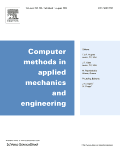
COMPUTER METHODS IN APPLIED MECHANICS AND ENGINEERING
Unveiling New Dimensions in Engineering through Computation.COMPUTER METHODS IN APPLIED MECHANICS AND ENGINEERING, published by Elsevier Science SA, is a premier journal that has significantly contributed to the fields of computational mechanics, computer science applications, mechanical engineering, and the mechanics of materials since its inception in 1972. With an ISSN of 0045-7825 and an E-ISSN of 1879-2138, this journal is recognized for its rigorous peer-review process and is consistently ranked in the Q1 quartile across multiple categories, including Computational Mechanics and Mechanical Engineering. Its impressive Scopus rankings place it in the top tiers of its field, with a percentile ranking of 98th in Computational Mechanics. Researchers, professionals, and students will find the journal's comprehensive scope and high-quality articles invaluable for advancing their knowledge and practices at the intersection of engineering and computation. Although not an open-access journal, its impactful contributions to both theoretical and applied research make it an essential resource for anyone involved in these dynamic fields.
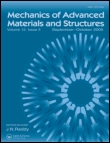
MECHANICS OF ADVANCED MATERIALS AND STRUCTURES
Advancing the frontiers of materials science and structural engineering.Mechanics of Advanced Materials and Structures is a distinguished journal published by Taylor & Francis Inc, focusing on the innovative fields of Civil and Structural Engineering, Materials Science, Mechanical Engineering, and Mechanics of Materials. With ISSN 1537-6494 and E-ISSN 1537-6532, this journal is positioned within the Q2 quartile rankings of its categories, demonstrating its significant scholarly impact. It has been a pivotal platform since its inception in 1997, providing researchers and professionals with comprehensive insights and the latest findings, until the expected closure in 2024. Situated in the United Kingdom, the journal is dedicated to enhancing the understanding of complex materials and structural behavior through rigorous peer-reviewed articles. Its high visibility in Scopus rankings further underscores its importance, making it an essential resource for those engaged in advanced materials research and structural analysis. With options for open access, the journal ensures broad dissemination of knowledge, fostering a collaborative environment for researchers, practitioners, and students alike.

COMPUTATIONAL MECHANICS
Unveiling New Horizons in Computational MechanicsCOMPUTATIONAL MECHANICS, published by SPRINGER, is a premier international journal that focuses on the intersection of applied mathematics, engineering, and computational methods. With a commendable Q1 ranking in multiple categories, including Applied Mathematics and Mechanical Engineering, this journal is pivotal for disseminating groundbreaking research and innovative methodologies that advance the field. The journal has steadily contributed to the academic community since its inception in 1986 and continues to lead discussions and practices in computational mechanics and related disciplines. With a robust impact reflected in its Scopus rankings—placing it within the top percentiles across various categories—COMPUTATIONAL MECHANICS serves as a crucial platform for researchers, professionals, and students seeking to explore and contribute to significant advancements in computational theory and mathematical applications. Although it does not currently operate under an open access model, the journal ensures wide accessibility through libraries and institutional subscriptions, fostering a rich exchange of knowledge in the global scientific community.
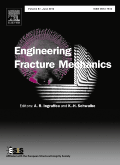
ENGINEERING FRACTURE MECHANICS
Advancing the Science of Material IntegrityENGINEERING FRACTURE MECHANICS, published by Pergamon-Elsevier Science Ltd, is a leading peer-reviewed journal that specializes in the field of fracture mechanics, focusing on the behavior of materials under stress. Established in 1968 and continuing to publish valuable research through 2024, this journal is pivotal for advancing the understanding of fracture mechanisms and their implications across various engineering disciplines. With its impressive impact factor and ranked in the Q1 category for Materials Science, Mechanical Engineering, and Mechanics of Materials, it holds a distinguished position in the academic community, reflected in its high Scopus rankings. Although the journal does not offer Open Access, it provides a wealth of knowledge and insights critical for researchers, professionals, and students aiming to deepen their expertise in the mechanics of materials and innovative engineering solutions.
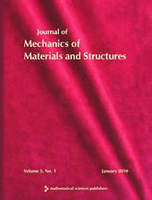
Journal of Mechanics of Materials and Structures
Exploring the Dynamics of Mechanics and Material Integrity.Journal of Mechanics of Materials and Structures, published by Mathematical Science Publishers, is a distinguished periodical in the field of Applied Mathematics and Mechanics of Materials. With the ISSN 1559-3959, this journal has been a pivotal platform since its inception in 2006, providing insights and advancements in the mechanics of materials and their structural applications. Operating out of the University of California, Berkeley, this journal not only boasts a respectable standing within its categories, ranking Q4 in Applied Mathematics and Q3 in Mechanics of Materials as of 2023, but it also serves a crucial role in fostering academic discourse among researchers, practitioners, and students alike. Although it does not currently offer open access, its contributions to the respective fields are invaluable, underscoring the relevance and importance of continued research in understanding material behavior and structural integrity. Whether investigating theoretical frameworks or engineering applications, the Journal of Mechanics of Materials and Structures remains an essential resource for anyone dedicated to the advancement of the science of materials and structures.

Materials Physics and Mechanics
Shaping the Future with Cutting-Edge ResearchMaterials Physics and Mechanics is a pivotal journal dedicated to advancing the fields of condensed matter physics, materials science, mechanical engineering, and the mechanics of materials. Published by the Institute of Problems in Mechanical Engineering, Russian Academy of Sciences, this journal has established itself as a valuable resource since its inception, particularly from 2003 to 2004 and now continuously from 2009 to 2024. Although it currently holds a Q4 categorization in various disciplines, its contributions are critical to understanding and developing new materials and their applications in engineering. The journal provides insightful articles that explore the nuances of material properties, their behaviors under different conditions, and the physical principles governing these phenomena. Though it operates under a traditional publication model, the insights provided within its pages are invaluable to researchers, professionals, and students striving to push the boundaries of knowledge in the materials domain. Its ISSN numbers (1605-2730, E-ISSN 1605-8119) serve as a gateway to a wealth of scientific knowledge emanating from the Russian Federation, contributing to the global discourse in materials physics and mechanics.
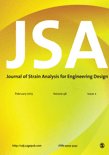
JOURNAL OF STRAIN ANALYSIS FOR ENGINEERING DESIGN
Unlocking the Potential of Materials with Comprehensive Strain Studies.The Journal of Strain Analysis for Engineering Design, published by SAGE Publications Ltd, is a prestigious academic journal that has been at the forefront of *engineering and applied mathematics* research since its inception in 1965. With a focus on the intricate analysis of strain in engineering design, this journal serves as a vital resource for researchers and professionals seeking to push the boundaries of understanding in mechanics and materials engineering. As of 2023, it enjoys a respectable ranking in its respective fields, including Q2 in *Mechanical Engineering* and *Mechanics of Materials*, and Q3 in *Applied Mathematics* and *Modeling and Simulation*, reflecting its significant contribution to the academic community and relevance in practical applications. Although it is not an open-access journal, its rigorous peer-review process ensures the dissemination of high-quality research. The journal provides a platform for innovative ideas and methodologies, fostering advancements in engineering design and analysis vital for both academia and industry. By bridging theoretical foundations with real-world applications, the Journal of Strain Analysis for Engineering Design remains an essential publication for those dedicated to addressing the complexities of modern engineering challenges.

Mechanics of Solids
Unlocking the Secrets of Solid StructuresMechanics of Solids, published by PLEIADES PUBLISHING INC, is a vital academic journal dedicated to the study of mechanics within solid materials, encompassing fundamental principles and cutting-edge research. With an ISSN of 0025-6544 and an E-ISSN of 1934-7936, this journal bridges the gap between theoretical and applied mechanics, offering insights valuable to both researchers and practitioners in the field. Historically spanning from 1975 to 1989 and continuing from 2008 to 2024, it serves as a comprehensive resource for developments in mechanics of materials and interdisciplinary physics. Despite its current positioning in Q4 in Mechanics of Materials and Q3 in Physics and Astronomy for 2023, the journal is striving to enhance its impact and visibility, as reflected in its rankings in Scopus, which places it in the 24th percentile for General Physics and Astronomy and 19th percentile for Mechanics of Materials. While the journal currently does not offer Open Access, it remains committed to providing quality, peer-reviewed content that fosters innovation and knowledge dissemination for its diverse readership in the United States and beyond. The journal's continued relevance in the evolving landscape of engineering physics and materials science positions it as a crucial platform for scholarly exchange and advancement.
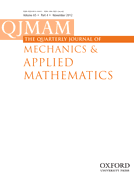
QUARTERLY JOURNAL OF MECHANICS AND APPLIED MATHEMATICS
Advancing the Frontiers of Mechanics and Mathematics.Quarterly Journal of Mechanics and Applied Mathematics, published by Oxford University Press, stands as a pivotal platform in the realms of applied mathematics, mechanical engineering, and condensed matter physics. Established in 1948, this venerable journal has continuously contributed to advancements in the understanding of complex mechanical phenomena through rigorous research and scholarly articles. With its Q3 status across multiple categories—applied mathematics, condensed matter physics, mechanical engineering, and mechanics of materials—it serves as a significant resource for both emerging and established researchers. While the journal is not open access, it is highly regarded for its selective publication process, ensuring that only high-quality, original research is disseminated. The impact factor reflects its critical role within the academic community, making it an essential read for scholars, professionals, and students aiming to stay at the forefront of developments in mechanics and applied mathematics.

Journal of Applied Mechanics and Technical Physics
Advancing the Frontiers of Mechanics and PhysicsJournal of Applied Mechanics and Technical Physics is a distinguished publication that serves as a vital resource for researchers and professionals in the realms of mechanical engineering, mechanics of materials, and condensed matter physics. Published by MAIK NAUKA/INTERPERIODICA/SPRINGER, this journal has been committed to disseminating high-quality research since its inception in 1965. With a noted presence in the academic community, it holds a respectable Q3 ranking in multiple categories as of 2023, indicating its relevance and contribution to the field. Although it does not currently offer open access, the journal provides valuable insights and advancements through its rigorous peer-review process. Covering a broad spectrum of topics in applied mechanics and technical physics, it aims to foster innovation and dialogue among scientists, engineers, and scholars alike. Located in the United States, the journal continues to make significant strides in bridging the gap between theoretical research and practical applications, making it an essential read for anyone engaged in these dynamic fields.